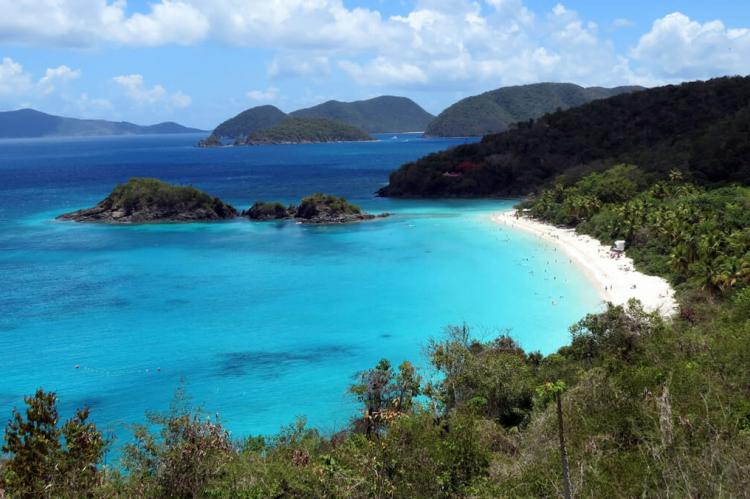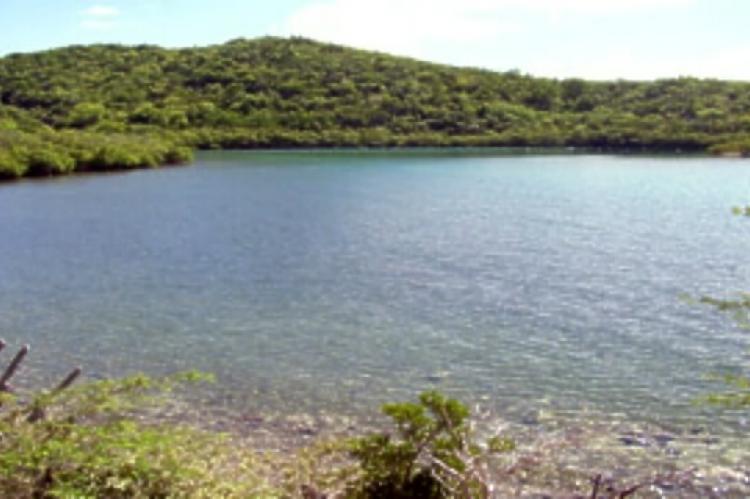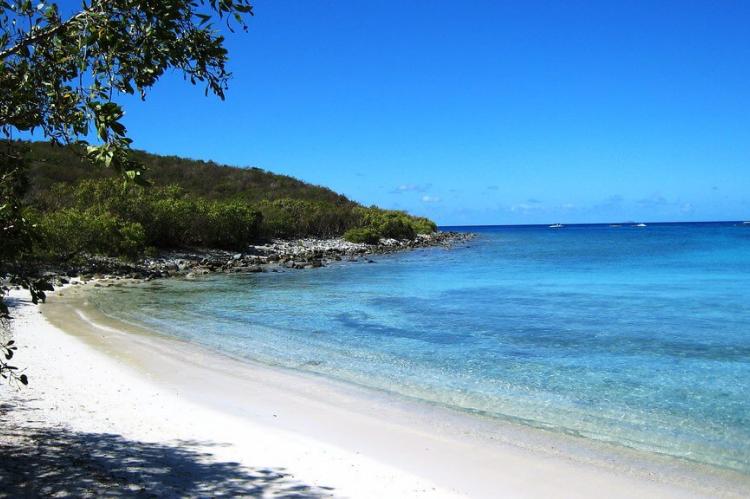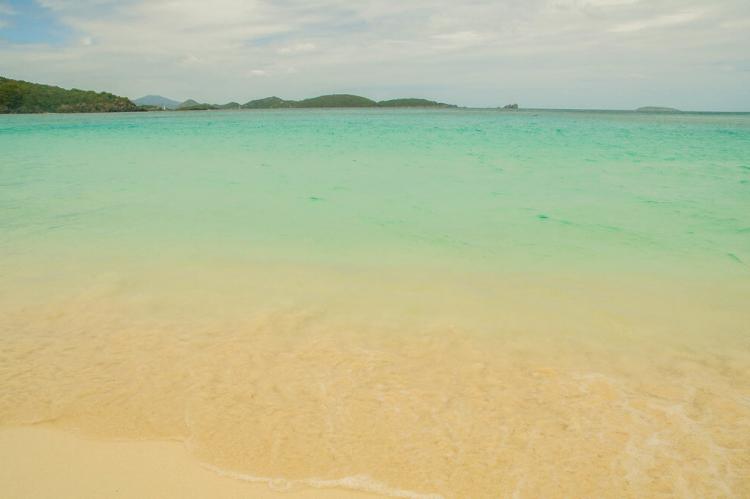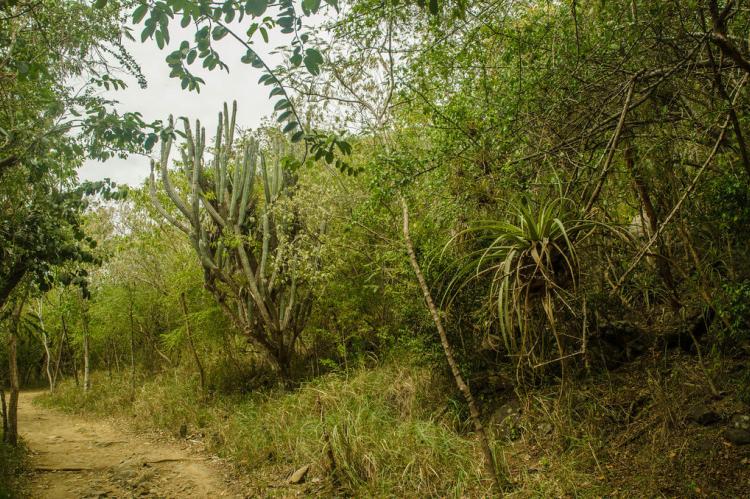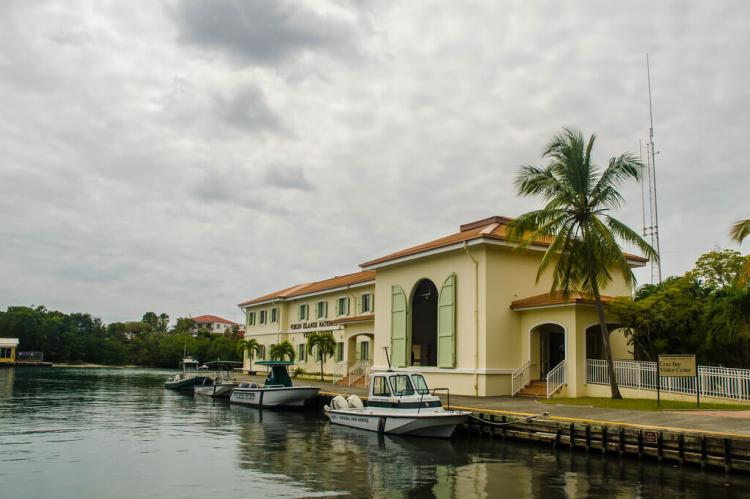Virgin Islands National Park and Coral Reef National Monument (USVI)
The Virgin Islands National Park, renowned worldwide for its breathtaking beauty, protects approximately 60% of St. John and nearly all of Hassel Island in the Charlotte Amalie harbor on St. Thomas. In addition, the Virgin Islands Coral Reef National Monument is located offshore of the island of St. John.
Virgin Islands National Park
The Virgin Islands National Park, renowned worldwide for its breathtaking beauty, protects approximately 60% of Saint John, United States Virgin Islands (USVI) and nearly all of Hassel Island in the Charlotte Amalie harbor on Saint Thomas.
The Virgin Islands lie between the Caribbean Sea and the Atlantic Ocean, approximately 65 km (40 mi) east of Puerto Rico. Much of the island's waters, coral reefs and shoreline are included in the National Park. This protection was expanded in 2001 when the Virgin Islands Coral Reef National Monument was created.
Within the Park's borders lie protected bays of crystal blue-green waters teeming with coral reef life, white sandy beaches shaded by seagrape trees, coconut palms and tropical forests providing habitat for over 800 species of plants.
The Virgin Islands National Park visitor center is located in Cruz Bay. The Park is well-known for scuba diving and snorkeling and has miles of hiking trails through the tropical rainforest. In addition to its natural beauty, a wealth of cultural resources is protected by the Park.
Relics from the pre-Columbian Amerindian civilization remains of the Danish colonial sugar plantations and reminders of African slavery and the post-Emancipation subsistence culture are all part of the rich cultural history of the Park and its island home.
Virgin Islands Coral Reef National Monument
The Virgin Islands Coral Reef National Monument is a U.S. National Monument, established in 2001, located offshore of Saint John, Virgin Islands.
The monument includes 5,142 ha (12,708 acres) of submerged lands within the 5 km (3 mi) belt off Saint John, including Hurricane Hole and areas north and south of Saint John.
The clear waters surrounding Saint John support a diverse and complex system of coral reefs. The health of these coral reefs is closely tied to its component plants and animals as well as the adjacent non-coral marine environments such as sandy bottoms, seagrass beds and mangrove forests.
The coral reefs of the U.S. Virgin Islands suffered severely from coral bleaching in 2005, which led to a 60% decline in coral activity.
The United States Geological Survey (USGS) began extensive research and discovered previously unknown coral ecosystems at the submerged stems of mangrove trees in the Hurricane Hole area of the National Monument.
Scientists found approximately 30 of the 45 coral species in the Virgin Islands and were also surprised by the number of sponge species. This is the first known occurrence of corals in a mangrove ecosystem.
Virgin Islands Biosphere Reserve
Note: Virgin Islands National Park was part of the World Network of Biosphere Reserves of the United Nations Educational, Scientific and Cultural Organization (UNESCO) for over four decades. However, it was voluntarily removed in 2017 when it could not meet the guidelines to maintain the designation.
The Virgin Islands Biosphere Reserve occupied about two-thirds of the volcanic island of Saint John, USVI and its surrounding waters. The area includes steep hillsides, rocky shores, coral and sand beaches, numerous bays, fringing coral reefs, canyons of coral ledges, coral gardens, turtle grass beds, mangrove swamps and natural salt ponds.
About 900,000 visitors annually visit the area for diving and snorkeling, boating, fishing and hiking. The Cruz Bay Visitor Center provides orientation talks, guided snorkel trips and cultural demonstrations.
The island now faces serious environmental problems from increasing tourism and residential development, including the destruction of wildlife habitats, reef destruction, commercial fishing activities, and water, as well as land erosion and related sedimentation on coral reefs.
